Infernax (Switch) Review
Viscera-Drenched Retro Action
Infernax wears its inspirations proudly on its blood-soaked scapular, namely Castlevania II: Simon’s Quest and Zelda II: The Adventure of Link. Both of these NES titles featured side-scrolling action, talking to villagers for tips, and light RPG elements such as leveling up, upgrading equipment, and gathering spells. When talking to the development team, Berzerk Studio, at a PAX West event a few years back, they spoke of a general goal of creating the best version of what those two games were trying to do and the result is a dark fantasy adventure with a lot of depth despite the game’s structure being rather simple.
The hero (or villain should the player choose to go that route) of Infernax is Duke Alcedor, a knight who returns to his land weary from the Crusades. Instead of a bardic song or a feast, Alcedor is greeted by various ghouls and demons. To defeat them, five elder demons must be conquered to open a sealed door. Leading those demons is Belphegor, a swollen, trident-wielding devil but there are a few greater beings to purge as well. Fighting the various monstrosities and seeing just how gross their designs and animations are is what makes Infernax such an entertaining journey. Boss fights are a delight and most of them are well-designed, challenging, and a blast to beat into a pulp.
Most damage is done through Alcedor’s mace, though there are other weapons to discover in various story routes. Overall, the player character is similar to a classic Dungeons & Dragons Cleric or Paladin. Alcedor has a mace and a shield at all times which is useful for blocking high and low attacks but he also has spells that seem right out of a Player’s Handbook. Spells like Shield, Heal, and Holy Light, all give the character an iconic feel without getting too far away from the core combat of the character. Alcedor doesn’t have much in the way of attacking from a distance aside from the Holy Light spell that adds a small fireball to attacks, resulting in fights that are up close and therefore evoking more visceral encounters. Alcedor has to deliberately swing that mace into the flesh of demons and warped people; there’s a sense of macabre responsibility in the character that is rare in games like this. Truly dark scenes in the evil route of the game add even more to the pain this knight carries.
Combat is also fueled by experience and gold; experience is used to level up Power, Health, and Magic while gold is used to buy weapons, spells, and potions. Like most Metroidvania games with a leveling system, I actually found grinding to be enjoyable and it made it feel like I was always making progress. Playing in Casual Mode over Classic Mode was my preferred way to play since it keeps experience and is a lot more forgiving with checkpoints.
This is one of the more challenging dungeons in the game, mostly due to an abundance of death pits and fast-moving enemies.
While I personally didn’t have much issue with it, Infernax is a challenging game. I was able to beat the game in a few sessions which I chalk up to my general familiarity with this genre. Where I did find frustration was in the game’s platforming and movement upgrades. Alcedor eventually gets access to a downward thrust, a vertical slash, and a charge move that hurls him horizontally though most of the game can be traversed with simple jumps with air maneuverability. There’s no Belmont jump arc here! The issue I have with Infernax is that the game frequently presents platforms in a way where the player has to jump off a ledge and then propel themselves mid-air with very little horizontal movement. There’s a little coyote time (jumping after going off a ledge, a mechanic popularized by Donkey Kong Country) at work but it’s a tight window to get down. It’s super awkward and it often calls for more precision than I think it needs. There are also plenty of level areas littered with instant-kill pitfalls that are tough to navigate when dealing with stiff movement, slight knockback, and truly evil enemy placement. Some sections just felt sadistic in a way that felt unfair. Some bosses also felt like there were patterns that were unavoidable so I hoarded a ton of potions and always had the Heal spell equipped.
Honestly, the platforming and gaps in checkpoints had me ready to put the game down after a single playthrough. I was fully ready to walk away satisfied with one run through the game. However, rolling credits unlocks volumes of Inferno Power books with additional character insight, artwork, and cheat codes, one of which completely changed my approach to seeing what Infernax offers in repeated playthroughs.
Encountering a werewolf at night makes a lot of sense and it is a memorable boss fight in Infernax.
To the right of a werewolf encounter is a temple dedicated to crowd-funding backers (the story behind this game’s funding is fascinating because they actually refunded everyone and kept their promise about delivering the game to those people because the development process was longer than expected) and the far right has a Game Wizard input screen, hearkening back to the classic NES Game Genie device. Layering codes can make the game slow down in parts though, at least on this current Switch version, so speedrunners beware. The code I acquired after beating the game once gave me a jetpack that made it so that I could skip all platforming sections. From here, I loaded up a new game and proceeded to beat it over and over, acquiring most of the endings and going through the secret dungeon. All of that extra content, I happily tackled because a cheat code made the game more accessible to me. There are also two codes in the accessibility section of the options menu for invincibility and infinite jumps, though these are not immediately available as the player must first get to the temple and then put in at least one code before any save point can be used for additional codes.
Infernax also features a hidden morality mechanic that creates several routes through quests and decisions. The game smartly opens with one of these decisions to either spare or kill a man suffering from demonic corruption. These go slightly beyond a typical video game morality system in that there are four endings that one can reach with varying levels of good and evil deeds. The actions often fall into gray areas. There were many moments where I genuinely felt disgusted at the actions of the hero and the supporting cast. Playing through the ultimate evil route is exceptionally dark and gruesome but the ultimate good route is also drenched in heinous actions. Some scenes have more weight when the music cuts out, leaving only the sounds of a blade piercing a body or the cackle of an eldritch being. I would have liked for there to be more variety in the soundtrack but each tune is catchy and fits the NES theme perfectly. Ultimately, seeing every scene and gathering the various weapons was incredibly fun.
Further adding to the replay value, Infernax features a few classes that Alcedor can adopt including a barbarian, a wizard, and even a Contra-style soldier with an automatic rifle. These classes have so much detail put into them including custom sprites for armor upgrades, fullscreen versions for those aforementioned choices, and character portraits. These more campy elements do stand in stark contrast to the grim tone of the core game but there’s so much retro fun injected into Infernax that I couldn’t help but grin in sheer delight at wielding a chainsaw or using the iconic Konami code to start the game as Maxime Gunn. Much like the developers, who shared Gunn’s inclusion in the game’s marketing, I do think it’s important to play the game normally first. After that though, go wild with cheats, characters, speedruns, or whatever because Infernax is a game that is a treat to play.
A classic cheat code at the game’s start screen allows one to play as Maxime Gunn, inspired by Contra on NES.
Few tributes to gaming history pull off what Infernax has accomplished. This feels like what Shovel Knight did with the Mega Man/DuckTales fusion design, rectifying Zelda II and Castlevania II that makes me keen to see what devs can do with other less liked games of classic eras. There is good design to be found all over games history and so much more to discover in retro visual and gameplay design.
A ton of hard work and time was put into Infernax; there are comparison art pieces in the gallery showing a Flash version of the idea from 2011 so there are more than ten years of time put into this throwback. The development process was discussed in a podcast interview I conducted in 2020, right before COVID-19 changed so much about games, mainly their creation and marketing. That stretch of time undoubtedly led to the extraneous details and systems in the full release, adding a touch of extra flair and fun to the mix like how the gore splatters and gathers on the player in a realistic way, eventually sloughing away over time. It’s obvious that everyone involved in this production cares deeply for the artistic effort put into games and just how much there is still to explore creatively in an 8-bit style. I desperately hope we get updates or DLC for Infernax such as a boss rush, additional cheat codes, new characters, and more because I simply want to keep playing. I hope this eventually leads to a sequel or more bloody games with a similar tone.
This scene was expertly paced and eerie.
Anyone with a passing interest in retro gaming should check out Infernax immediately but I would also argue that this game is a fascinating artistic expression of dark fantasy that most gamers, that are not squeamish obviously, would enjoy.
SCORES
GAMEPLAY - 8/10
VISUALS - 10/10
SOUND - 8/10
CONTROLS - 8/10
REPLAY VALUE - 10/10
OVERALL - 8.8/10
More information can be found on the official Infernax website. The game is available on Steam, Switch, PS4, PS5, Xbox One, and Xbox Series X|S. A digital copy was purchased by the reviewer. Screenshots were captured through native Switch features.
For more medieval gore, check out my review of Blasphemous, which also got some new content via a free update recently. Even more violence towards demons can be found in abundance in my review of DOOM Eternal.
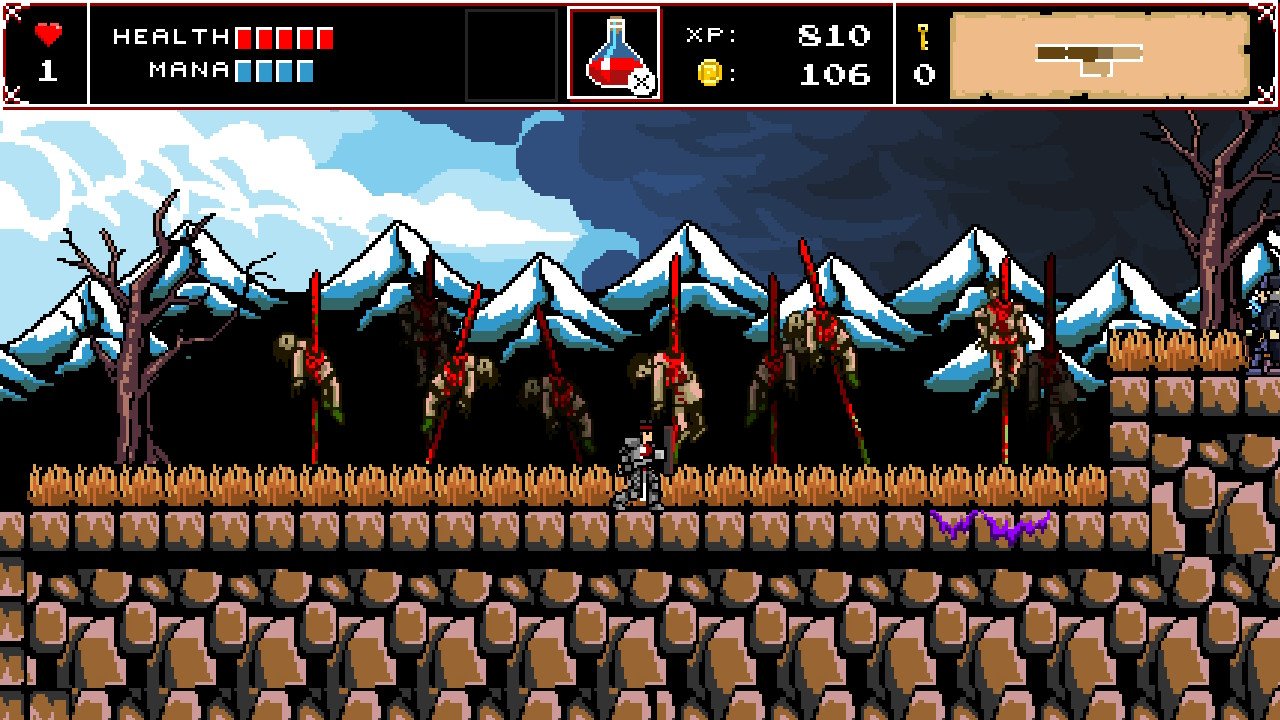
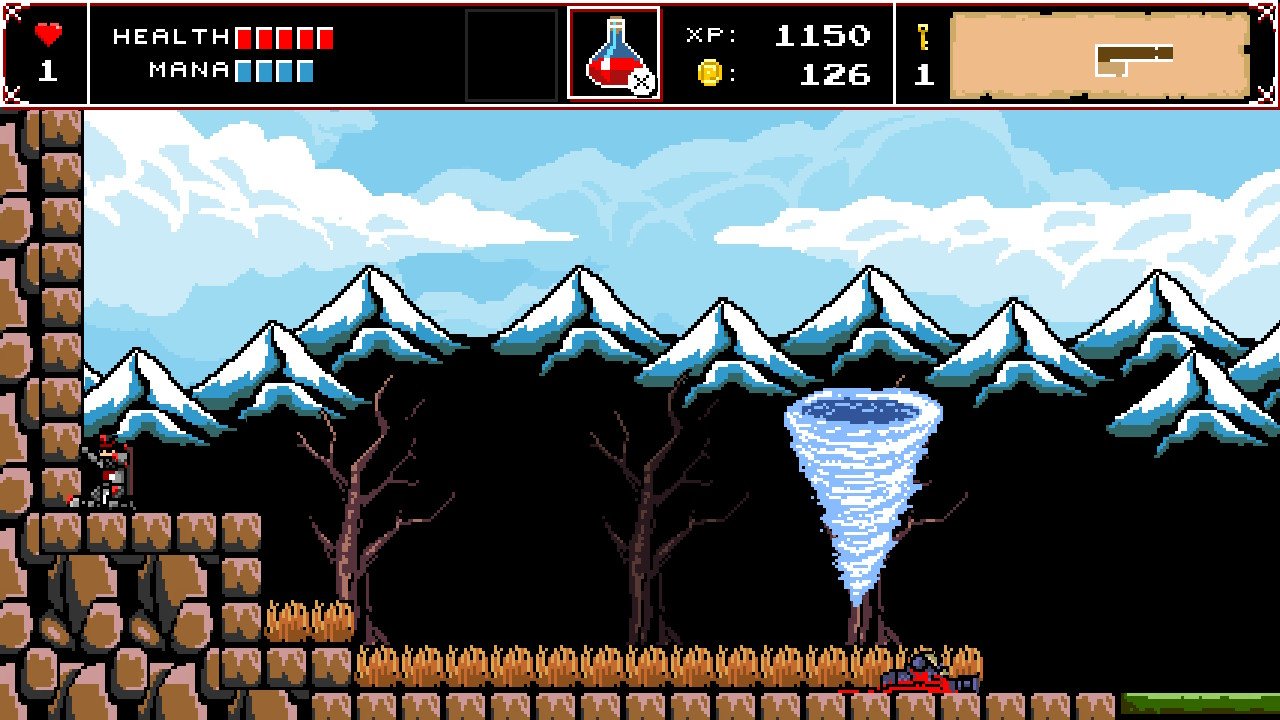

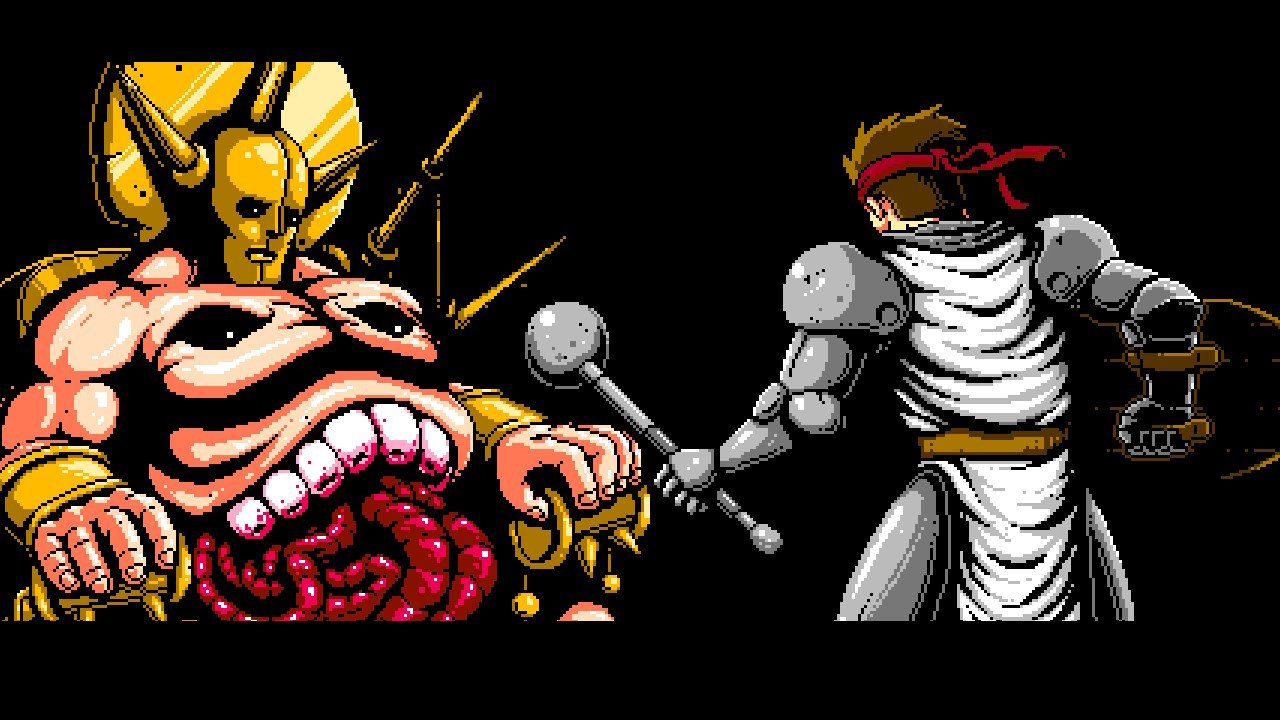
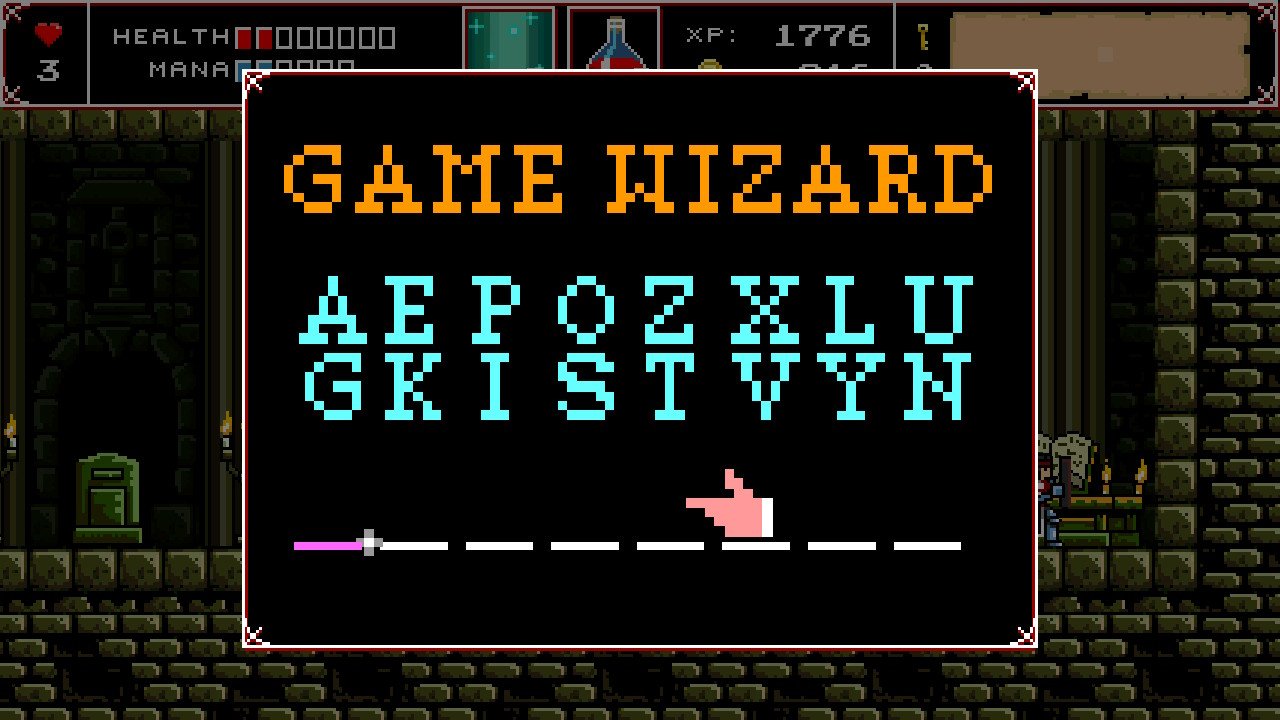
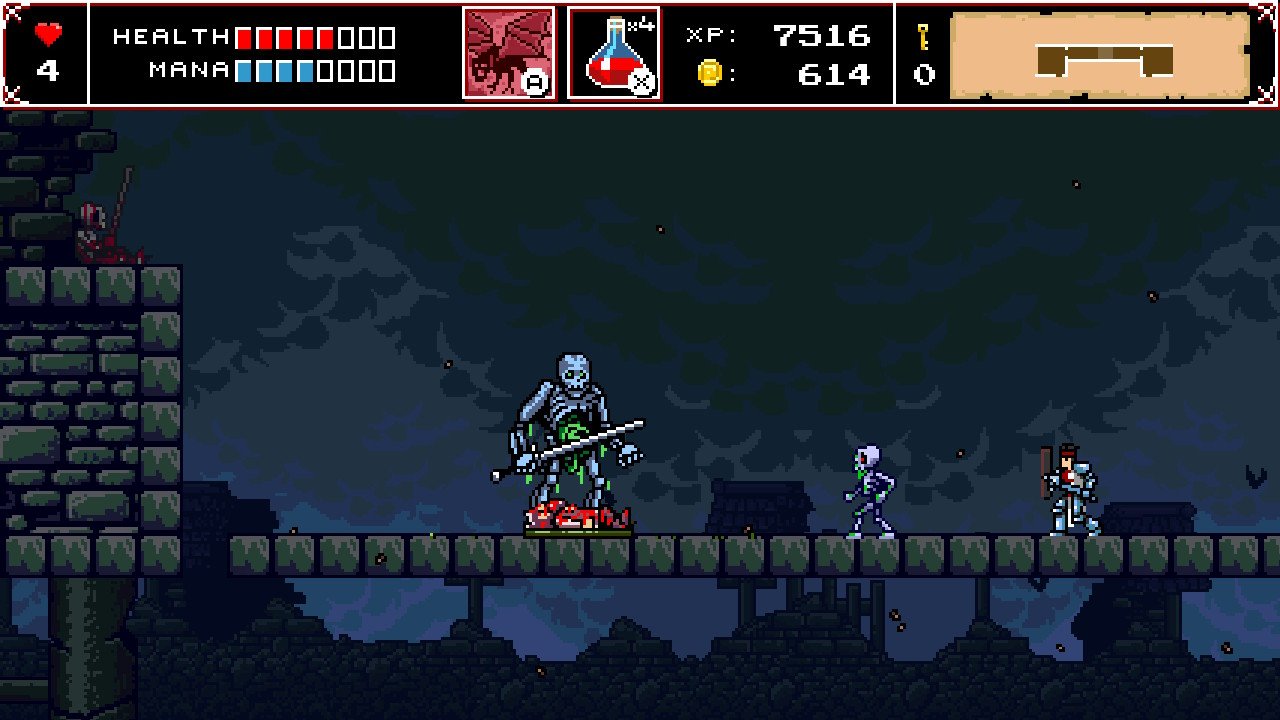

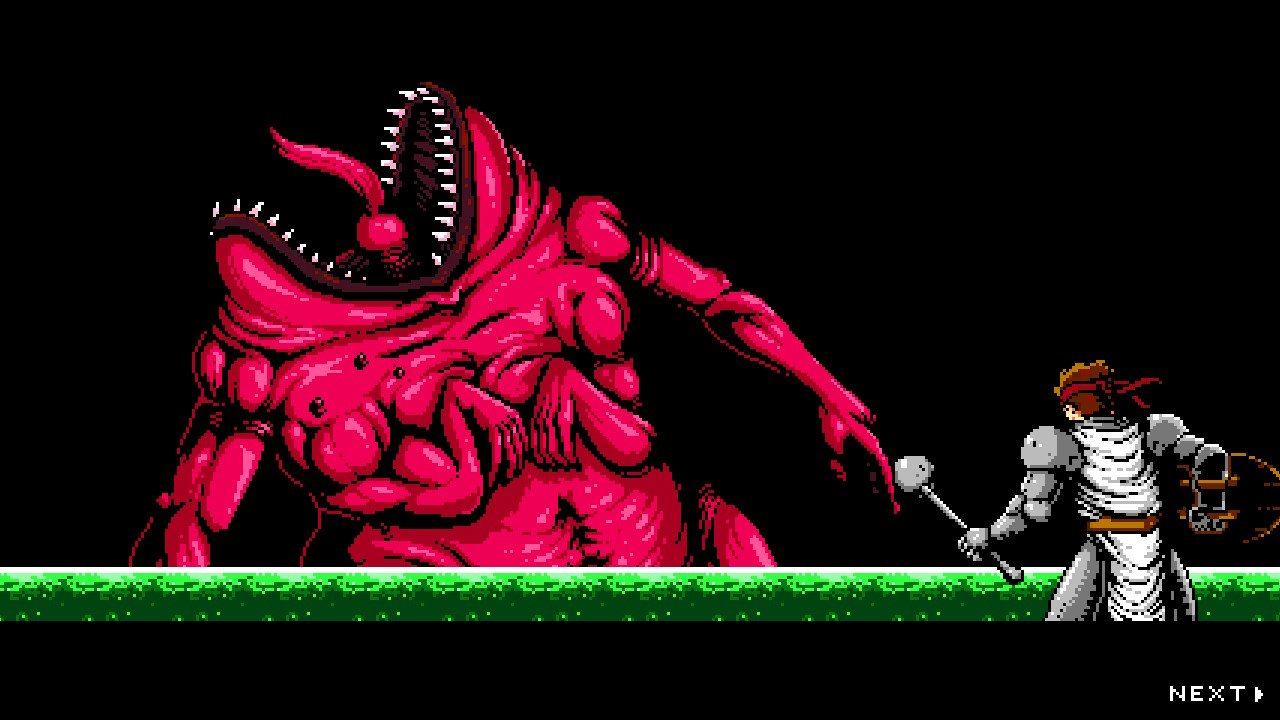

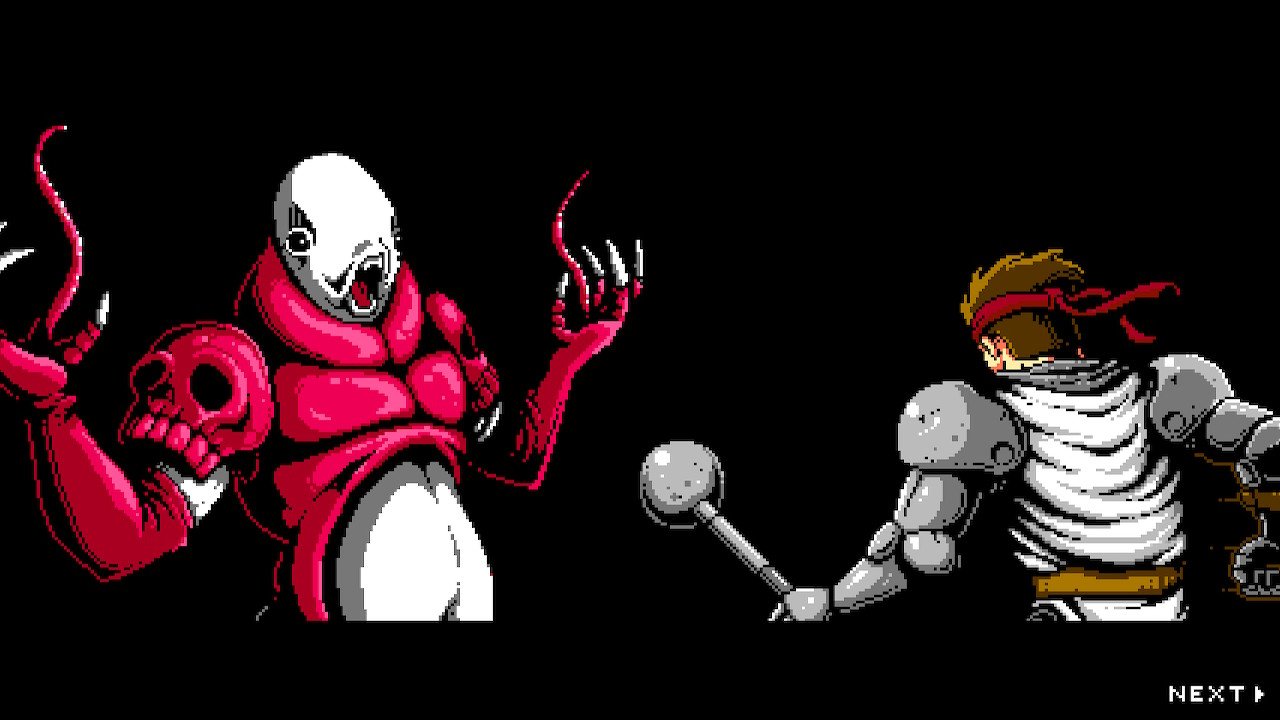



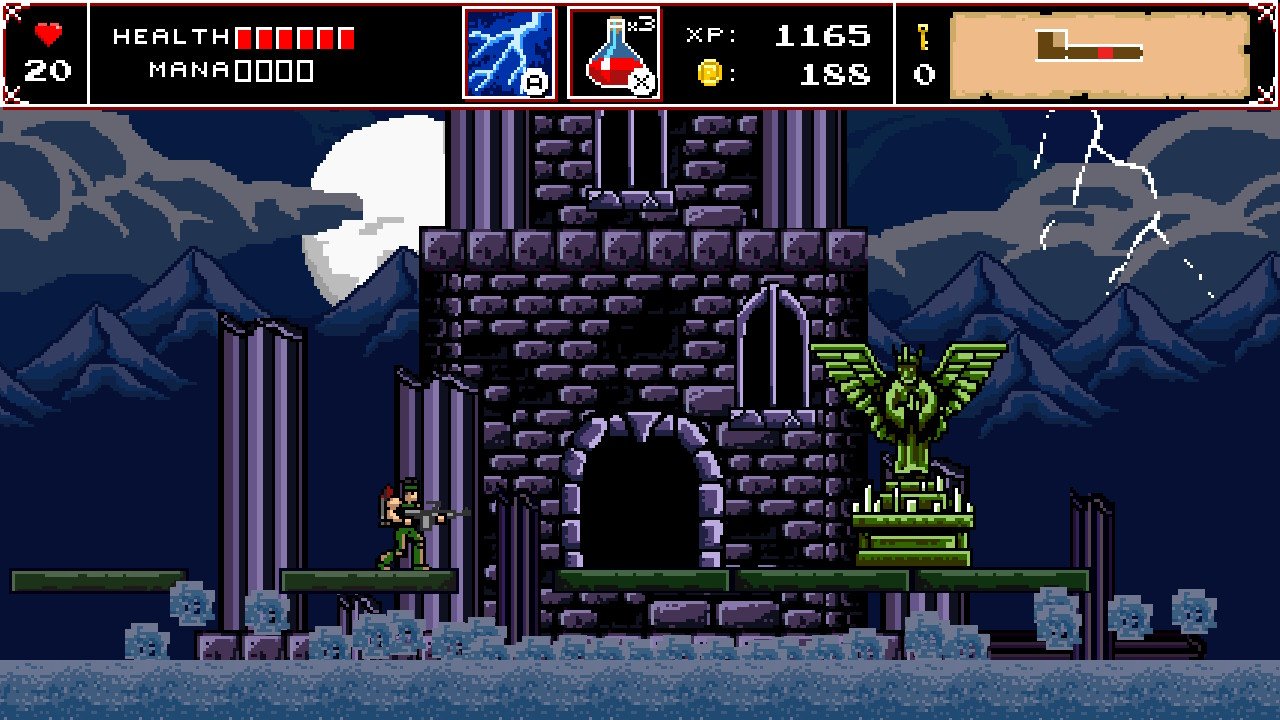

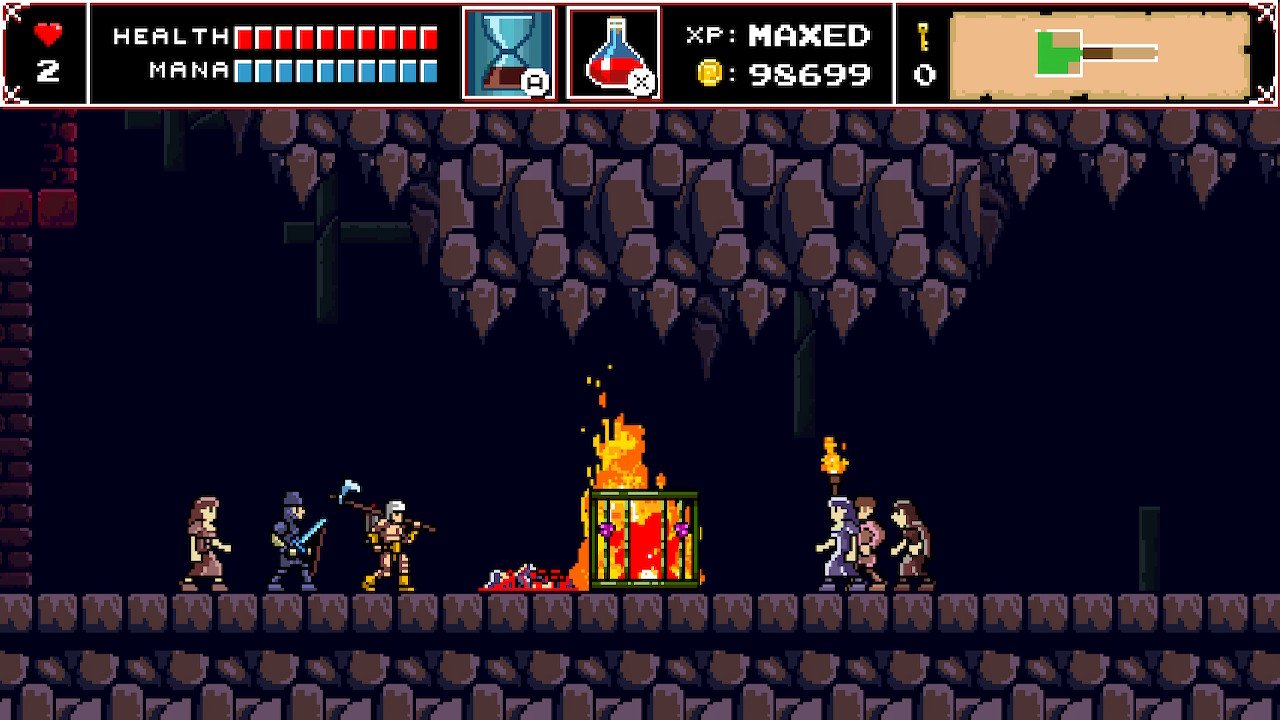

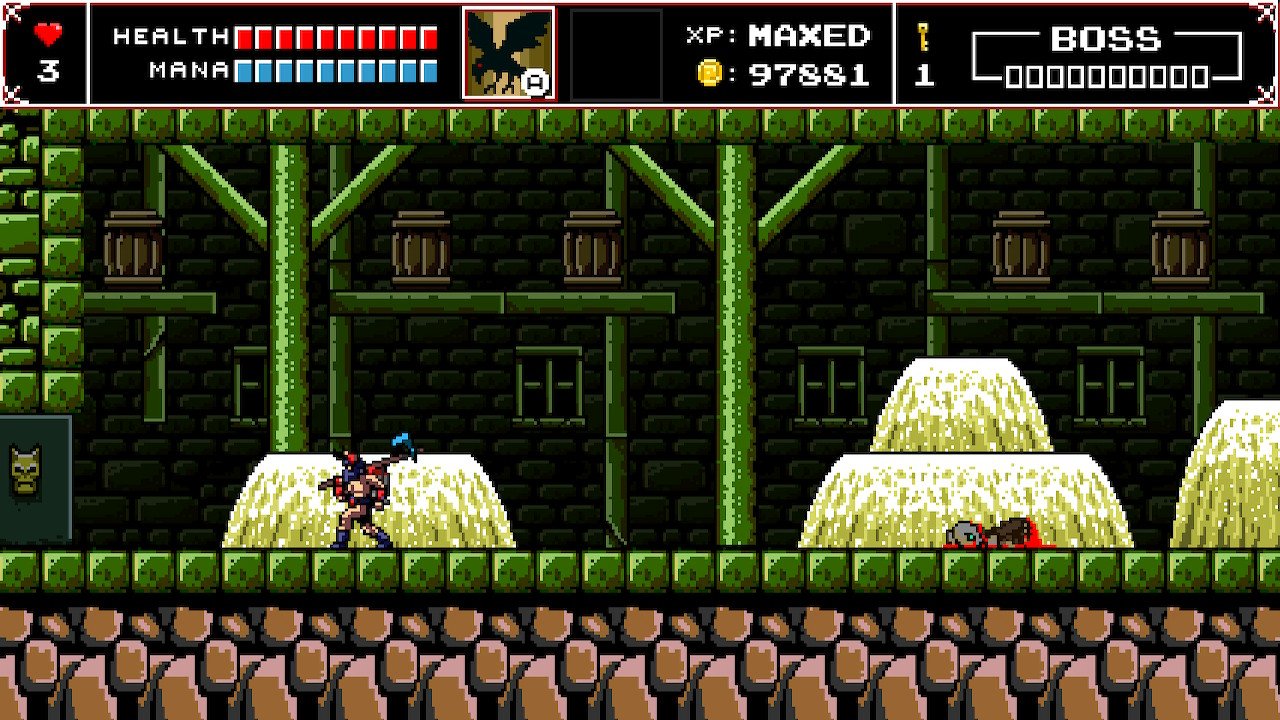
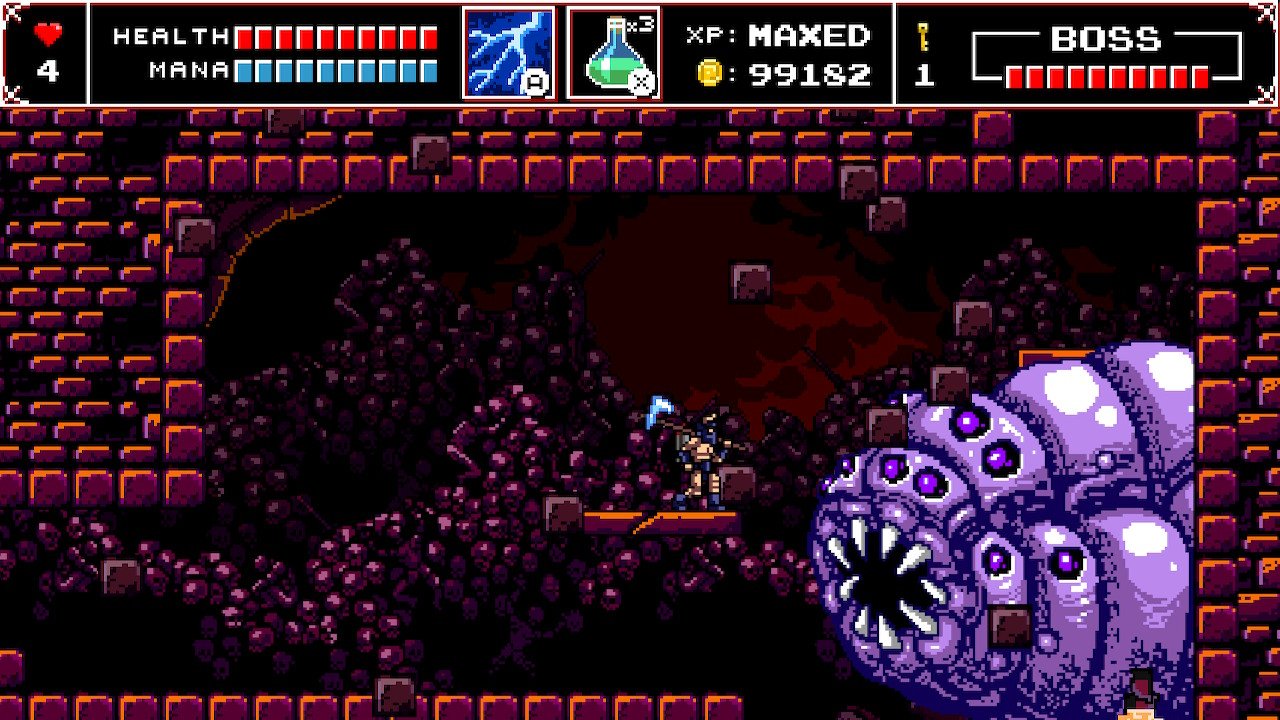









Evil West from Focus Entertainment and developer Flying Wild Hog is a dumb action game that leans into its themes in the best way.